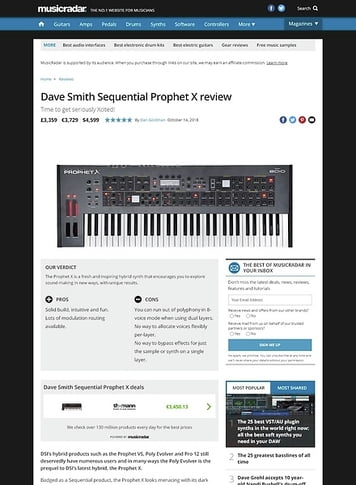



1982 saw the introduction of MIDI, a standardized means of synchronizing electronic instruments that remains an industry standard. In 1978, Sequential Circuits released the Prophet-5, which used microprocessors to allow users to store sounds for the first time. In 1970, the smaller, cheaper Minimoog standardized synthesizers as self-contained instruments with built-in keyboards, unlike the larger modular synthesizers before it. The Moog synthesizer, developed by Robert Moog and first sold in 1964, is credited for pioneering concepts such as voltage-controlled oscillators, envelopes, noise generators, filters, and sequencers. Synthesizer-like instruments emerged in the United States in the mid-20th century with instruments such as the RCA Mark II, which was controlled with punch cards and used hundreds of vacuum tubes. Compatibility with patches from the CZ-101, CZ-1000, CZ-3000 and CZ-5000 models (via SysEx) makes it a must-have for any CZ enthusiast, while those unfamiliar with Casio's family of synths will find plenty of interest in its characteristic squelchy basses, weird digital effects and soft, nostalgic plucks.A sample of several common synthesizers (Moog Model D, Juno 106, and TB-303) being played together. VirtualCZ does a great job of emulating Casio's flagship CZ-1 phase distortion synth.

There's also a simple one-knob Chorus effect, a dedicated vibrato panel and various other modulation and tuning options including adjustable pitchbend range. In 32-note polyphonic mode, VirtualCZ's voices can be set to alternately pan around the centre point with the Pan Width knob, while the mono and legato modes feature up to eight-voice unison detune with free-running or synced voices. This is particularly useful in conjunction with the synth's Ring Modulation capabilities, opening the creative door to cool DnB Reeses and other such filthy sounds for those prepared to experiment a little. Each Line also has it's own pitch and amplitude envelopes, and the Lines can be independently detuned via their Octave, Semitone and Fine parameters.įurther harmonic interest can be introduced with the Ring and Noise Modulation modes, and as well as the three basic Mix settings (Line 1, Line 2 and Line 1+Line 2), Line 1+Line 1 mode makes Line 1 heard alongside a detuned version of itself. If you'd prefer a less complicated approach, there's a standard ADSR envelope onboard, too. You can morph between the original sine and the alternating waveforms with a turn of the DCW knob, or use the dedicated eight-stage envelope to create this movement automatically. There are eight of these waveforms to choose from: Saw, Square, Pulse, Double Sine, Saw Pulse and three Reso shapes, which are hard-synced sine waves with sawtooth, triangle and trapezoid envelopes. VirtualCZ features two sine oscillators, called Lines, which are shaped using two alternating waveforms.


 0 kommentar(er)
0 kommentar(er)
